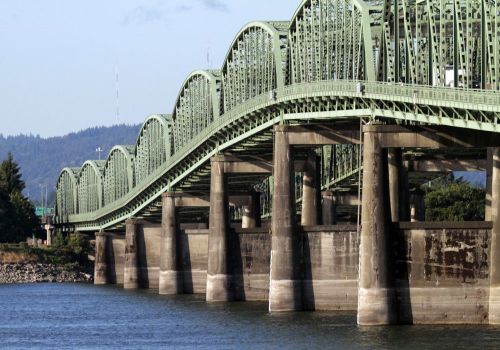River users say planned Columbia bridge won’t work
Published 9:06 am Friday, June 8, 2012

- <p>In this Thursday, Aug. 4, 2011, file photo, taken in Vancouver, Wash., the Interstate 5 bridge spans the Columbia River between Oregon and Washington states in Vancouver, Wash. The planners of a new Interstate 5 bridge over the Columbia River have spent $140 million designing a span theyÕve had to redesign once already. Now it turns out they didnÕt know the proposed bridge would be too low for a U.S. Army Corps of Engineers dredge that plies the river. (AP Photo/Don Ryan)</p>
PORTLAND A newspaper investigation has turned up new questions about the proposed design of an Interstate 5 replacement bridge across the Columbia River.
Documents show the projects sponsors either didnt know about or didnt accommodate concerns about the bridges height, the Oregonian newspaper reported Friday.
Trending
For instance, the paper reported, after seven years of work the planners didnt know until February that the 95-foot clearance would be too low for a U.S. Army Corps of Engineers dredge thats 116 feet high.
And the proposed bridge isnt high enough for a growing number of companies along the river that employ a total of 600 people making big equipment such as oil-drilling rigs that get sent downriver a few times a year.
The bridge is expected to cost $3 billion and accommodate vehicle traffic, light-rail mass transit, bicyclists and pedestrians. The sponsors say it would help commuter and freight traffic and be less vulnerable to earthquakes. The current bridge is two spans, one dating to 1917, the other to 1958.
Planners have already spent $140 million and redesigned the proposed bridge once when outside analysts faulted a plan as risky and untested. Another redesign might add $100 million in costs.
The current bridge has a lift section that can provide clearance of 178 feet. Project sponsors said a 95-foot clearance on a new bridge would accommodate all but a few river users.
But, the Oregonian report shows, the projects planners overlooked the dredge and didnt notice that more steel fabrication companies were joining the likes of Thompson Metal Fab, which operates in a former Kaiser shipyard on the north bank of the Columbia in Vancouver, Wash.
Trending
In October, the Coast Guards bridge administrator, Randall Overton, said in a letter that the bridge design had too little clearance, and that the project planners failed to mention the fabricators in an environmental review.
In response, project leaders defended the design.
We have confidence that the technical work that has been in process for the past several years is a sound body of work, said Paula Hammond and Matt Garrett, heads of the Washington and Oregon transportation departments, in a November 2011 letter to the Coast Guard. A project of this magnitude must address the total array of users in the decision making process and the 95-foot clearance meets those needs.
In March, the Coast Guards opposition became public.
The discovery that the Corps of Engineers Yaquina dredge wouldnt fit added to concerns.
Think about if we had another Mount St. Helens, with silt dumping into the river, and the dredge couldnt get under that bridge, said Capt. Mark McCadden, chief of external affairs for the Coast Guards District 13 in Seattle.
A higher bridge would require a steeper grade over the river, which engineers felt was unacceptable for safety reasons, and eliminating a hump in the span would entail extending it north and south. That would have significant impacts, such as making it difficult to connect to a state highway to the north. There also are concerns about traffic from nearby Pearson Field, the municipal airport east of downtown Vancouver.
Project officials are proposing compromises to salvage the current design, such as persuading the fabricators to leave their hulking products partially assembled until they clear the bridge and then to finish assembly downriver.
You might as well bankrupt us, responds Jason Pond, CEO of steel fabricator Greenberry Inc. of Corvallis, which leased space along the river in 2010. I just dont get it. This is a project thats all about jobs. I just assumed that they wouldnt kneecap these companies that are offering great jobs.
The corps is looking at the feasibility of modifying its dredge. Lowering its mast, lights and other structural elements could cost more than $500,000, said spokeswoman Amy Echols.
The project has long been criticized by environmentalists and others who way it will contribute to global warming and just move traffic problems south into Portland. Last summer, a review instigated by Gov. John Kitzhaber and Oregon Treasurer Ted Wheeler found toll revenue projections inflated and traffic projections outdated.









